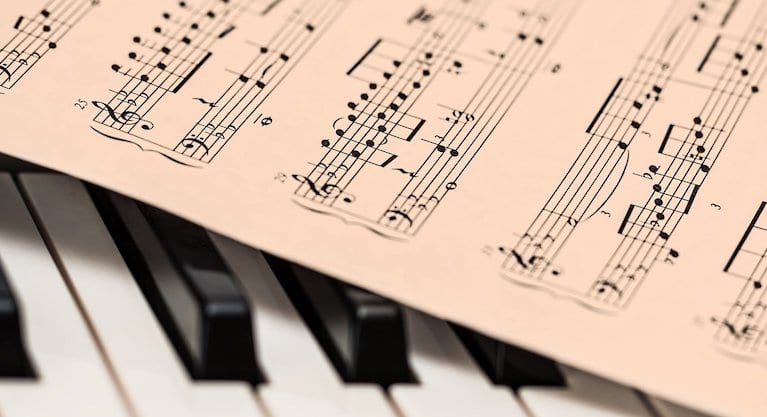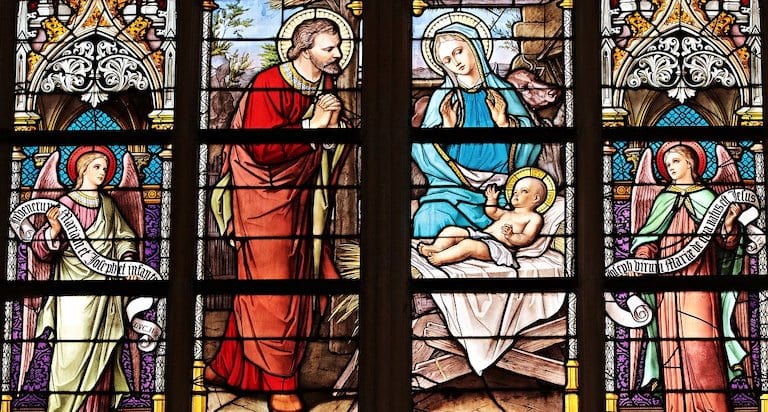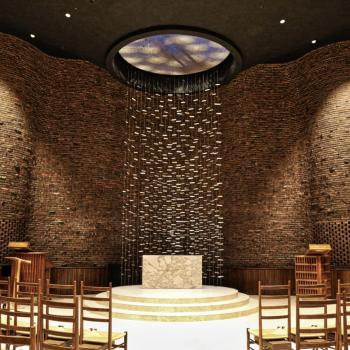
This is the second part of an article about the value of listening to sacred music – rather than just using it as an aid in worship. If you haven’t read Part 1, I suggest you do that before moving on.
My main point is that sacred music can do more than just function as a part of a worship. While I am not disparaging that important role, I am encouraging us to view sacred music as a resource for learning and discipleship.
MUSIC AS SERMON
In order to apprehend how this is possible, we need to think about the job of the sacred music composer. When a composer sits down to write a piece of music – say, a choral anthem based on a psalm – she is not primarily thinking of writing something “beautiful”, or even something that communicates a specific emotion. While those are certainly important goals, they are not the most important ones. Instead, she is fundamentally trying to create musical “interpretation” of the text. Like the director of film approaching the screenplay, she is trying to bring the psalm to life in a way that is interesting, evocative, and – most of all – spiritually valuable. In essence, she is writing a sermon – but using notes instead of words.
As with any preacher, the composer of sacred music wants her creation to contribute to the life of the congregation. And when her piece is experienced as a part of corporate worship, it does. For example, its slowly-moving harmonies and tender melodic turns might beautifully prepare the hearts of the congregation for the celebration of Communion. But when we only experience her piece in this way – as an emotional “tool” that helps us worship – we miss out on much of the value of her work. It’s like listening to the pastor’s sermon with half an ear, paying attention primarily to its overall mood without digging into the nuances of his message.
There is a name for the act of experiencing a piece of music in this way: it’s called musical listening. And it’s something that we rarely do in a church service.
This is an unfortunate irony because we are surrounded by sacred music.

STAINED-GLASS WINDOWS
Here’s an analogy that might help understand the difference between experiencing music as an aid to worship and truly listening to it.
Think of stained-glass windows. My church has a whole bunch. They bathe the church in a rainbow of light that is utterly different than anything I experienced in my daily life. When I sit in the sanctuary on Sunday mornings, the light from those windows combines with the choral music, clergy vestments, and the architecture of the building to create an environment for worship. It makes that hour on Sunday morning different from every other hour. It makes it holy.
But let’s not forget that those windows are not just windows: they are works of art. They aren’t just pieces of colored glass, but beautiful and intricate portrayals Biblical stories and figures. Every single decision about those windows was made by a highly-trained artist. Every color was chosen in order to make a point about the scene being portrayed. Every window is an extraordinary artistic attempt to interpret a Biblical story in a way that will be contribute value to a church community from generation to generation.
Yet, I rarely look closely at these works of art. In fact, if I find my eyes lingering on them when my mind starts to wander during a sermon, I scold myself and refocus on the pastor’s words.
I let their colors wash over me, and they bring me closer to God. There is nothing wrong with that. But what would happen if I really looked at those windows? What if I viewed them not “just” as aids to worship, but as I said above, as “sermons”: that is, as interpretations of Scripture that can help me better follow Christ?
What if my church were to remove those windows some Sunday and put them in the middle of the sanctuary, then asked us to look closely at them in this way?
Our churches don’t do that with our stained-glass windows. But by not doing so, we miss out on an extraordinary resource for our congregations and ourselves – one that is literally surrounding us, but whose wisdom we simply don’t ever really explore.
In most of our churches we experience sacred music like the light from those windows. A powerful postlude inspires us to go out in the world and serve Jesus. A meditative choral anthem helps prepare us for prayer. But each of those pieces of music is also a work of art – indeed, even a sermon – which deserves our sustained, detailed attention. That is, each deserves our attention as listeners, not just worshippers.
In the next part of this article I’ll describe the obstacles that keep us from really benefiting from the wisdom of sacred music. Then I’ll describe some ways to overcome them.













